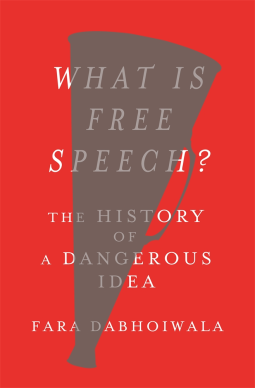What Is Free Speech?
The History of a Dangerous Idea
by Fara Dabhoiwala
You must sign in to see if this title is available for request. Sign In or Register Now
Send NetGalley books directly to your Kindle or Kindle app
1
To read on a Kindle or Kindle app, please add kindle@netgalley.com as an approved email address to receive files in your Amazon account. Click here for step-by-step instructions.
2
Also find your Kindle email address within your Amazon account, and enter it here.
Pub Date Aug 05 2025 | Archive Date Aug 05 2025
Harvard University Press | Belknap Press
Talking about this book? Use #WhatIsFreeSpeech #NetGalley. More hashtag tips!
Description
“A brilliant history of a weaponized mantra.” —The Guardian
A leading intellectual historian shows how free speech, once viewed as both hazardous and unnatural, was reinvented as an unalloyed good, with enormous consequences for our society today.
Every premodern society, from Sumeria to China to seventeenth–century Europe, knew that bad words could destroy lives, undermine social order, and create political unrest. Given the obvious dangers of outspokenness, regulating speech and print was universally accepted as a necessary and proper activity of government. Only in the early 1700s did this old way begin to break down. In a brief span of time, the freedom to use words as one pleased was reimagined as an ideal to be held and defended in common.
Fara Dabhoiwala explores the surprising paths free speech has taken across the globe since its invention three hundred years ago. Though free speech has become a central democratic principle, its origins and evolution have less to do with the high-minded pursuit of liberty and truth than with the self-interest of the wealthy, the greedy, and the powerful. Free speech, as we know it, is a product of the pursuit of profit, of technological disruption, of racial and imperial hypocrisy, and of the contradictions involved in maintaining openness while suppressing falsehood. For centuries, its shape has everywhere been influenced by international, not just national, events; nowhere has it ever been equally available to women, the colonized, or those stigmatized as racially inferior.
Rejecting platitudes about the First Amendment and its international equivalents, and leaving no ideological position undisturbed, What Is Free Speech? is the unsettling history of an ideal as cherished as it is misunderstood.
Fara Dabhoiwala is Senior Research Scholar and Professor in the Department of History at Princeton University and author of The Origins of Sex: A History of the First Sexual Revolution. Formerly on faculty at the University of Oxford, he is a Fellow of the Royal Historical Society, All Souls College, and Exeter College.
Advance Praise
"[A] brilliant history of a weaponised mantra." - Joe Moran, The Guardian
"Tracing a global history of speaking freely is no small task. Dabhoiwala tracks the vicissitudes of the idea with gusto, through religious prohibitions (heresy and blasphemy), monarchical edicts (sedition, abolished in Britain in 2009), colonial suppression of slave speech, and the perennial existence of what our betters now call ‘misinformation’, which takes giant leaps forwards (or backwards) in the era of printing, newspapers and the internet." - Nina Power, The Telegraph
"Fara Dabhoiwala's remarkable global history of free speech is written with wit, fluency, and dazzling erudition. Constantly surprising, and full of subtlety and nuance, it reveals what a new and innovative idea free speech was when it was first upheld as a civilized goal in the eighteenth century—and how many extraordinary twists and turns it has taken ever since, into the present. Examining who in history could speak and who was silenced, Dabhoiwala reminds us of the crucial relationship between speech and power. Eye-opening, thought-provoking, and deeply enjoyable, What Is Free Speech? is a work of great profundity and brilliance." - William Dalrymple, author of The Golden Road
Available Editions
| EDITION | Hardcover |
| ISBN | 9780674987319 |
| PRICE | $29.95 (USD) |
| PAGES | 480 |




